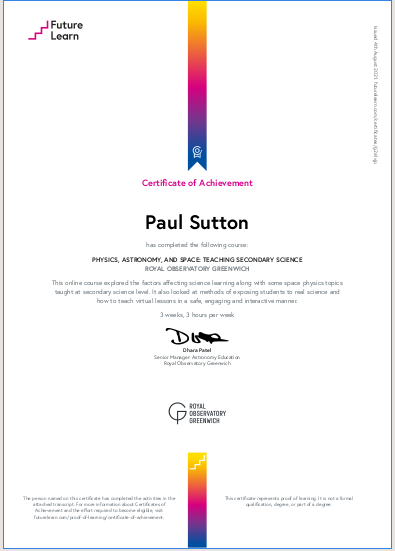Spacefarers: How Humans Will Settle the Moon, Mars, and Beyond : Writeup
6th April
Speaker: Christopher Wanjek
Description:
More than 50 years after the Apollo 11 moon landing, why is there so little human presence in space? Will we ever reach Mars? What will it take to become a multi-planet species, colonizing the Solar System and travelling to other stars?
With details here
Write up.
This was another really interesting, thought provoking lecture presented by Christopher Wanjek
The lecture started at about 15:30 in to the video after Frank has given his introduction, details of upcoming lectures and also an update on space news.
So some of the items covered were the cost and difficulty of getting off Earth in to space, then on to the Moon, very expensive. However once there, we are not out of the woods, the lunar surface is bombarded with radiation, the moon dust itself is toxic, growing food would need to be undertaken under artificial light, due to the radiation.
As the temperature on the moon can fluctuate between -200 and +200 F then one course of action for establishing some sort of presence on the moon would be the poles, where the temperature is a “cold, but workable” -50c.
We can harvest ice to produce Water, which can also be converted in to Hydrogen and Oxygen,
Christopher also then looked at how we can develop science on the Moon, Geology, Biology.
A look at gravity and how much humans rely on Gravity and how this can perhaps be created artificially.
The European Space Agency are looking at sending pods to the moon, build something before we go, I think it was also suggested we need to cover any buildings with moon dust, in order to provide full shielding from radiation. This apparently needs to be about 1 meter thick layer. Bare in mind that the dust is like Asbestos. Getting around and some transportation systems were suggested.
We may need to live in caves as these would be a constant temperature and a shield against radiation.
Space tourism could potentially be a huge industry
As We are unable to have children on the Moon (something to do with gravity) then building cities may not be practical.
So on to Mars
Firstly getting there is dangerous, we are potentially exposed to radiation over a long period of time, once there the surface is still bombarded with radiation and there are dust storms to contend with, However it was suggested we could live in caves
One way of protecting us from radiation is to use Boron Nitriade, as boron can absorb secondary particles .
Mars surface has toxic components, so we may have to grow food under LED lights.
So lots to think about, lots of challenges a head so a great time to discuss more, study science and help work on the solutions needed.
A lot more was discussed including design of space suits,
Thank you for reading, worth checking out the video and the book Spacefarers by Christopher.
You can find more upcoming (monthly) lectures below.
Updates:
#video,#astronomy,#space,#science,#stsci


